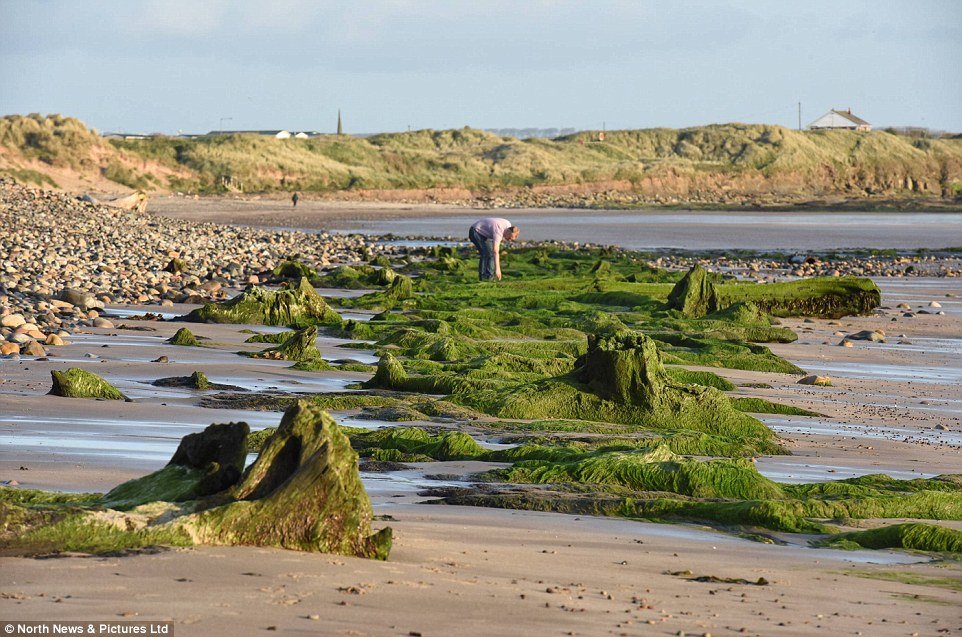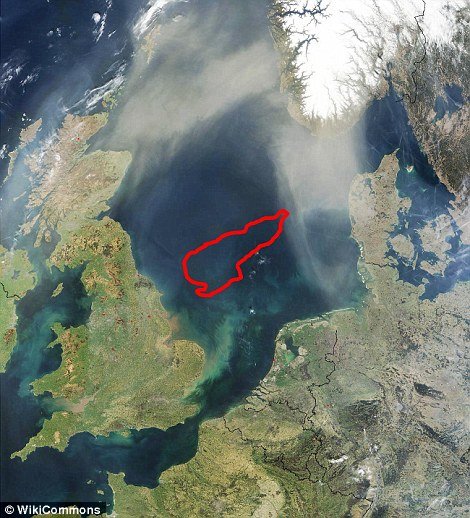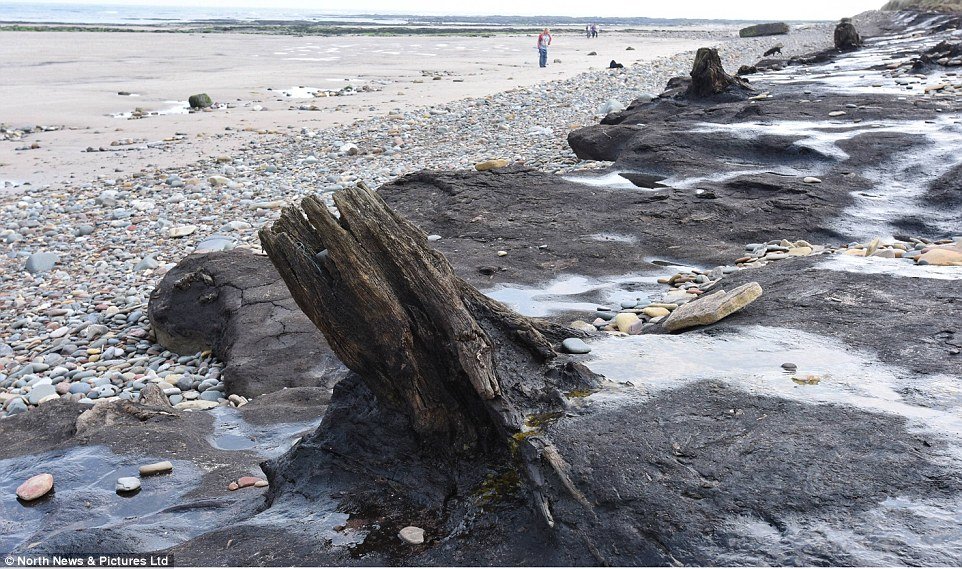
The North Sea has eroded the shore of a Northumberland beach to reveal the remnants of an ancient forest dating back 7,000 years. Archaeologists believe the preserved tree stumps and felled tree trunks lining the shoreline. Forests would have covered the area once known as 'Doggerland' - an area of land stretching between England and Europe which existed before the North Sea was formed by glacial melt water and geological movements.
Ancient footprints as well as prehistoric tree stumps and logs have become visible along a 200-meter stretch of a coastline at Low Hauxley near Amble, Northumberland, in what is believed to be Doggerland, the Atlantis of Britain.
The
Daily Mail reports that the forest existed in the late Mesolithic period. It began to form around 5,300 BC, and it was covered by the ocean three centuries later. The studies proved that at the time, when the ancient forest existed, the sea level was much lower. It was a period when Britain had recently separated from the land of what is currently Denmark. The forest consisted mostly of hazel, alder, and oak trees.
Researchers believe the forest was part of Doggerland, an ancient stretch of a land, which connected the UK and Europe.Doggerland: Stone Age Atlantis of BritainLocated in the North Sea,
Doggerland is believed to have once measured approximately 100,000 square miles (258998 square kilometers). However, the end of the Ice Age saw a great rise in the sea level and an increase in storms and flooding in the region, causing Doggerland to gradually shrink.

The area, which would have been home to a range of animals, as well as the hunter gatherers which stalked them, became flooded due to glacial melt, with some high-lying regions such as 'Dogger Island' (pictured, highlighted red) serving as clues to the regions ancient past
Finally, modern technology has reached a level in which their dreams may become a reality. Doggerland is thought to have been first inhabited around 10,000 BC, and innovative technology is expected to aid a new study in glimpsing what life was like for the prehistoric humans living in the region before the catastrophic floods covered the territory sometime between 8000 - 6000 BC.

Among the remnants of the ancient forest are tree stumps jutting out of the beach, which have been preserved in a layer of peat
Read the remainder of the article
here.






Comment: See also:
Tsunami created North Sea 'Atlantis' 8,000 years ago
Britain's Atlantis: Scientific study beneath North Sea could revolutionise how we see the past